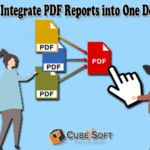Getting an interview email is an exciting moment in your job search journey. It’s a clear indication that your resume and cover letter have captured the attention of a potential employer. However, how you respond to this email is crucial, as it sets the tone for your professional image and can impact your chances of landing the job. In this article, we will guide you through the essential steps on how to respond to an interview email effectively.
Read the Email Thoroughly
Upon receiving an interview invitation via email, the first step is to carefully read the message. Pay attention to the date, time, and location of the interview, as well as any specific instructions provided by the employer. Ensure that you have a clear understanding of the details to avoid any confusion.
Confirm Your Availability
After reviewing the interview details, it’s essential to confirm your availability for the scheduled date and time. If the proposed interview time conflicts with your schedule, it’s crucial to respond promptly and propose alternative dates or times. Express your enthusiasm for the opportunity and your commitment to finding a suitable time for the interview.
Express Gratitude
When responding to an interview email, it’s essential to convey your gratitude for the opportunity. A simple “Thank you for considering my application” or “I appreciate the opportunity to interview for this position” can go a long way in leaving a positive impression on the employer. Expressing your gratitude demonstrates professionalism and appreciation for their time and consideration.
Be Professional and Courteous
Maintain a professional and courteous tone in your response. Address the sender by their proper title and name (e.g., Mr. Smith or Ms. Johnson) if provided in the email. Keep your language formal and respectful throughout the email, avoiding any overly casual or slang terms.
Confirm Your Understanding
To ensure you have a clear understanding of the interview logistics, it’s a good practice to summarize the key details in your response. This can include reiterating the date, time, and location of the interview, as well as any specific instructions or requirements provided in the original email. By doing so, you demonstrate your attention to detail and your commitment to a smooth interview process.
Attach Necessary Documents
In some cases, the interview email may request specific documents, such as additional references, a portfolio, or a completed application form. If these documents are requested, make sure to attach them to your response email. Organize the attachments neatly and clearly label them to make it easier for the recipient to access the information.
Ask for Additional Information
If the interview email does not provide certain essential information, don’t hesitate to ask for clarification. This could include asking for the names and titles of the interviewers, details about the interview format (in-person, phone, video), or any specific topics or tasks you should prepare for. Your willingness to seek out information demonstrates your proactive approach to the interview process.
Mention Your Contact Information
Include your contact information in your response email. This should include your phone number and a professional email address. In case there are any last-minute changes or if the employer needs to contact you, having your contact details readily available ensures effective communication.
Reiterate Your Enthusiasm
Restate your excitement and enthusiasm for the opportunity in your response email. Let the employer know that you are genuinely interested in the position and eager to discuss how you can contribute to their organization. Enthusiasm is a quality that employers value in potential candidates.
Proofread and Edit
Before hitting the “send” button, take a moment to proofread your response email. Check for any spelling, grammar, or formatting errors. A well-written, error-free response email reflects your attention to detail and your commitment to professionalism.
Conclusion
Responding to an interview email is a critical step in the job application process. Your response should reflect professionalism, enthusiasm, and a commitment to a smooth and successful interview experience. By following the steps outlined in this guide and using the sample response as a template, you can make a positive impression on your potential employer and increase your chances of moving forward in the hiring process. Good luck with your interview!
We think you’ll also like: How to Manage a Toxic Employee



